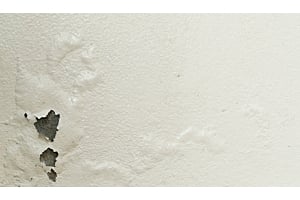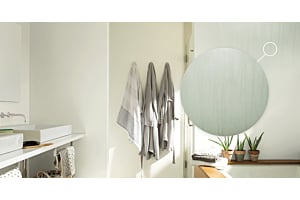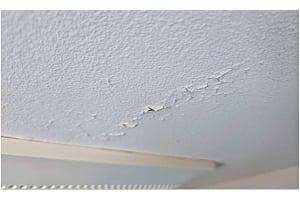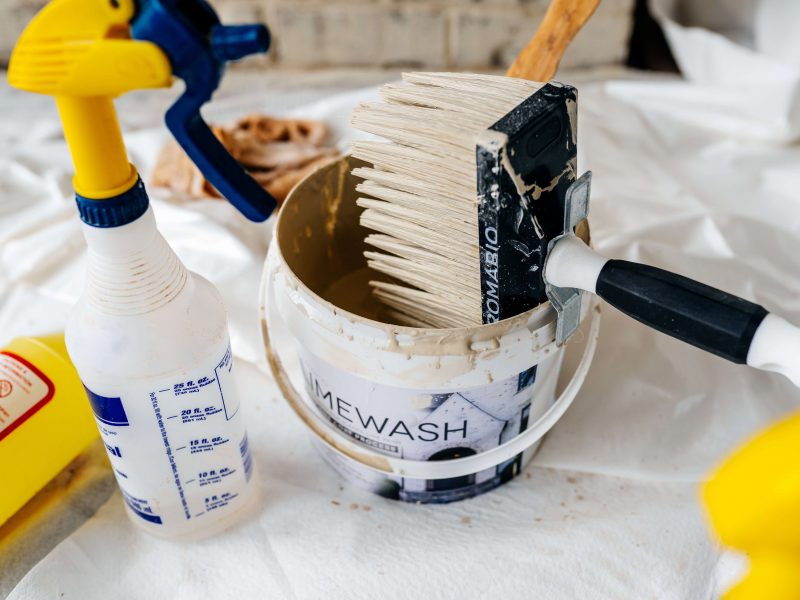
Should you whitewash your brick fireplace with lime? Interior designers get this question from clients all the time. Rising prices for new homes have made buying a fixer-upper to remodel more appealing. However, making an outdated red brick fireplace look modern can be a major project. Today’s home decor trends favor light, bright, farmhouse-inspired rooms, so painting or whitewashing a brick fireplace is a popular DIY project. Search online for “before and after whitewash brick fireplace” and you’ll find some beautiful fireplace makeovers. According to the pros, the best whitewash for brick is a lime wash like Romabio’s one-coat Classico Limewash.
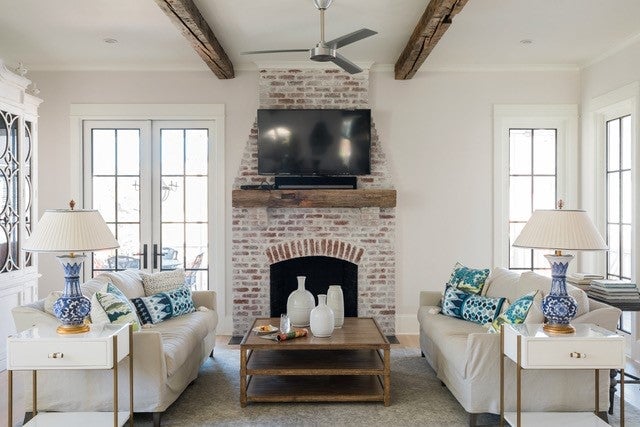
How To Whitewash A Brick Fireplace With Limewash
Keep reading for pro tips and pics of how to whitewash your brick fireplace (or even an entire brick wall) using this timeless finish. Update your own fireplace with Limewash and makeover your living room in a single afternoon.
What Is Lime Whitewash?
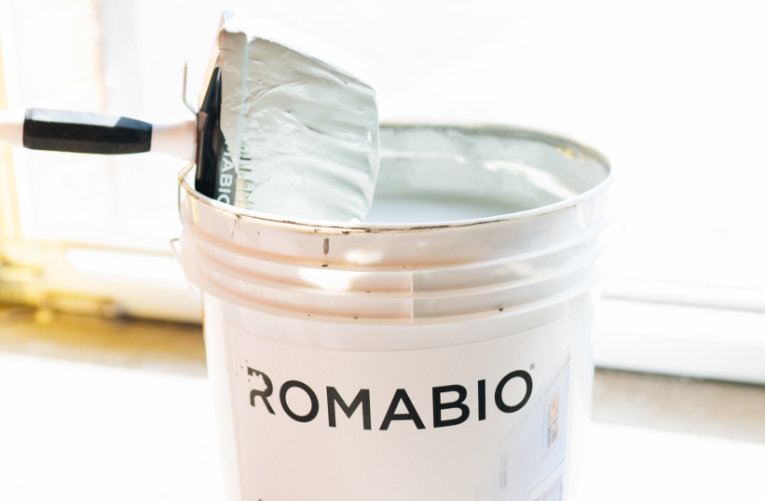
Lime whitewash is a paint-like coating that dates back to early Roman times. It’s the traditional whitewash finish you see on stone and stucco walls in the rustic villages of Europe. In fact, it wasn’t until the mid-twentieth century that limewash was replaced by modern paints. Authentic lime whitewash is a combination of part water and part limestone that has been slaked, or mixed with water and aged. The limestone dissolves into the water and creates a milky, paint-like liquid.
Lime whitewash has a high pH that inhibits the growth of mold and germs, and it’s a natural product that promotes healthy indoor air quality because it doesn’t create fumes like paint does. You can use lime whitewash both indoors and out on porous surfaces like brick, stone and concrete. The limestone in this whitewash actually calcifies onto the surface to create a durable finish. It’s a breathable, permeable coating that won’t damage the brick surface or trap moisture within. Architects often prefer Limewash to plain exterior paint because it creates an elegant custom look.
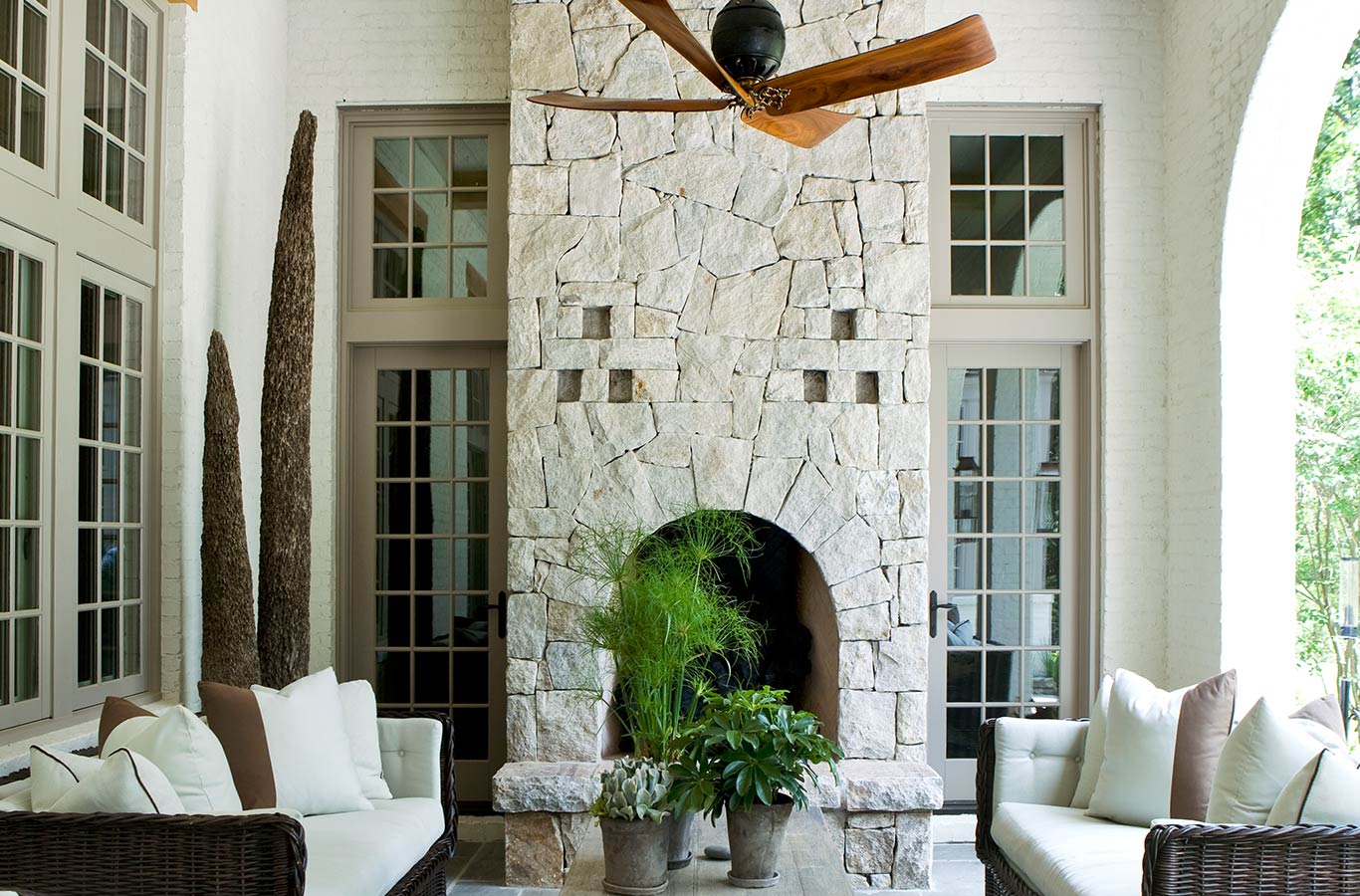
Romabio Classico Limewash on a stone fireplace
While there are various products on the market that claim to be lime whitewash, Romabio Classico Limewash is an authentic slaked lime finish that is formulated to be easy to apply and artistically distress. It is a natural product made from Dolomite lime from northern Italy. It contains no chemicals, is non-toxic, highly breathable, and permeable. You can order it pre-tinted to a Romabio white or we can custom tint Limewash to off-white colors.
Painting vs. Lime Whitewash On A Brick Fireplace
So you’re thinking of whitewashing your brick fireplace. The internet is full of DIY recipes and tutorials for faux finishes and chalk white paint. If you want an antique, distressed look, you’ll want to leave some bricks unpainted and that can be difficult to do.
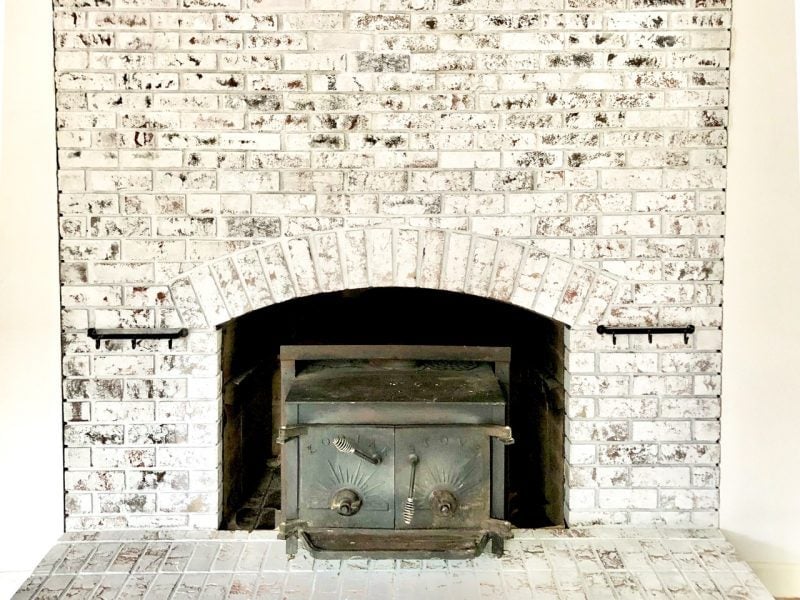
Avorio White on a Fireplace
Interior designers and professional painters often choose lime wash over painted brick because of its versatile, workable character, as well as its durability. You can use it to fully cover the brick, or remove some product to reveal the original brick color. It stays workable for two to five days so you can add another coat – or take it all off again. Expert painting technique isn't required for this home improvement project.
Paint can be less expensive than Limewash but once the first coat is applied there’s no going back. To achieve a distressed look, you’ll need to skip painting some of the bricks. It may also take several coats to whitewash bricks with heavy coverage. If you want an aged, whitewash brick finish, professional painters recommend using lime wash.
For a painted fireplace that has an antique, distressed look, Limewash is superior to paint. It can also be applied in a single coat, and cleans up easily with water. Lime whitewash is the perfect DIY project since you can choose exactly how much color and distressing you’d like.
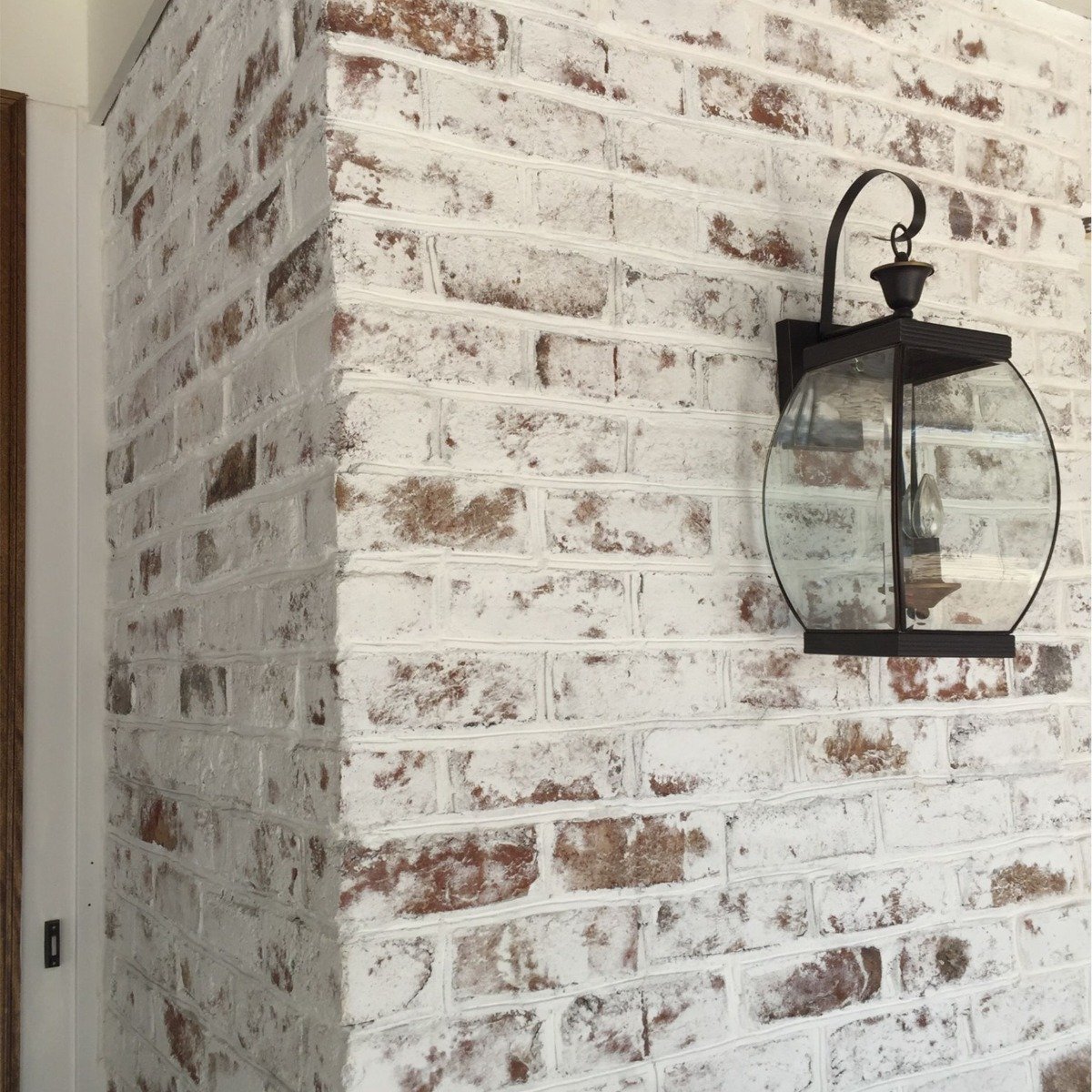
Brick with Romabio Classico Limewash in Bianco White
The flat finish also makes it easy to add another coat. To show more of the brick color, just remove more of the whitewash. If you’re not particularly crafty you can always hire a professional painter to whitewash your brick fireplace.
Which finish lasts longer?
Romabio Limewash whitewash will patina over time, and does not fade, peel, or flake off. It is also easy to maintain – just wipe down with water or add a little mild dish soap. If you accidentally scrub off some of the whitewash brick finish near the firebox you can apply another coat right on top. Limewash adds instant age and character to any plain brick surface.
White latex paint, on the other hand, is sometimes used for a whitewashed look, but it really isn’t the right product to whitewash brick fireplaces, because paint can trap moisture behind the brick and degrade it over time. This is less of an issue with interior brick like a fireplace. However, moisture can wick up from the foundation and work its way into the hearth, especially if the brick has not been carefully prepped and primed before painting.
If you want more of a solid, chalk paint look for your brick fireplace, look for a breathable paint designed for brick like Romabio’s mineral-based Masonry Paint, which is much more durable than latex paint and is guaranteed to last for 20 years.
How to Choose a Whitewash Brick Fireplace Color
Romabio Limewash is available in almost any off-white color from Benjamin Moore or Sherwin Williams, and in Romabio’s seven white and off-white shades designed to complement both warm and cool interior paint colors.
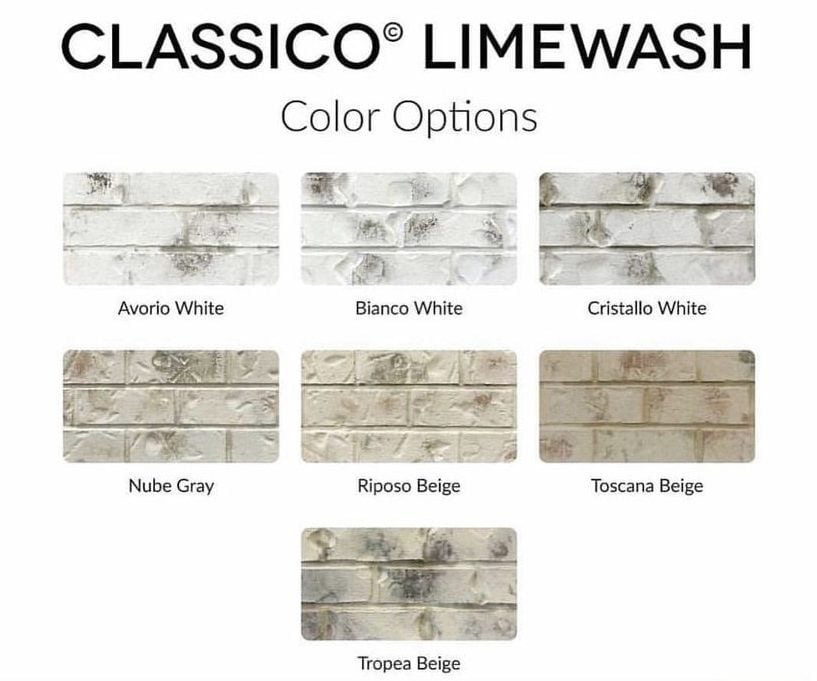
To choose the best shade of lime wash for your fireplace, start by looking at the other colors in the room. If you have predominantly warm white, greige or earth tone decor, choose a warm shade of lime wash. If your color scheme contains blue, dark gray paint or black, a neutral or cool toned shade like Nube Gray will probably work best. Shades of white can look very similar until they’re placed next to other colors, and then the undertones appear.
If your room has a mix of warm and cool tones, or you want the whitewash on the fireplace to have neutral undertones, you may want to start with Avorio White Limewash which is the most neutral Romobio color. Slightly warmer Cristallo White is the perfect choice for a cozy, warm whitewash that isn’t too creamy.
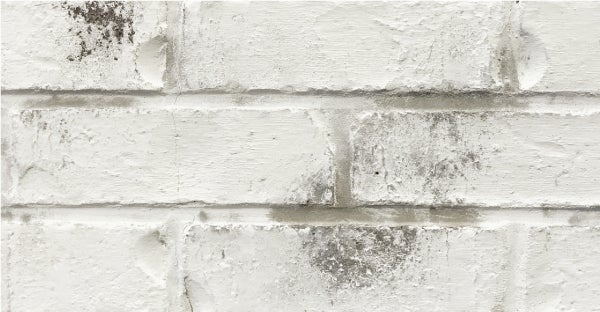
Romabio Classico Limewash in Avorio White
Interior designers recommend testing large swatches of paint in the room, or on a sample board, before making a final decision. This is really good advice – with a large sample, you can see how the color looks against furniture and fabrics, and how it changes throughout the day. Order a 1-liter sample of one or two Limewash colors to test on your fireplace; if it doesn’t look right, you can just wash it off.
Limewash can also be custom tinted in any shade that works with a white base.
How to Whitewash a Brick Fireplace With Limewash
Before brick can be whitewashed with lime, you must be sure it can absorb water. Limewash won’t work on painted or sealed brick, because it needs to be able to bind to a porous surface. Test your unpainted brick by spraying or splashing water onto it, and waiting a minute or two to see if it soaks in. If the water beads up, the brick has been sealed and it’s not a suitable surface for Limewash. If it soaks in, you’re good to go!
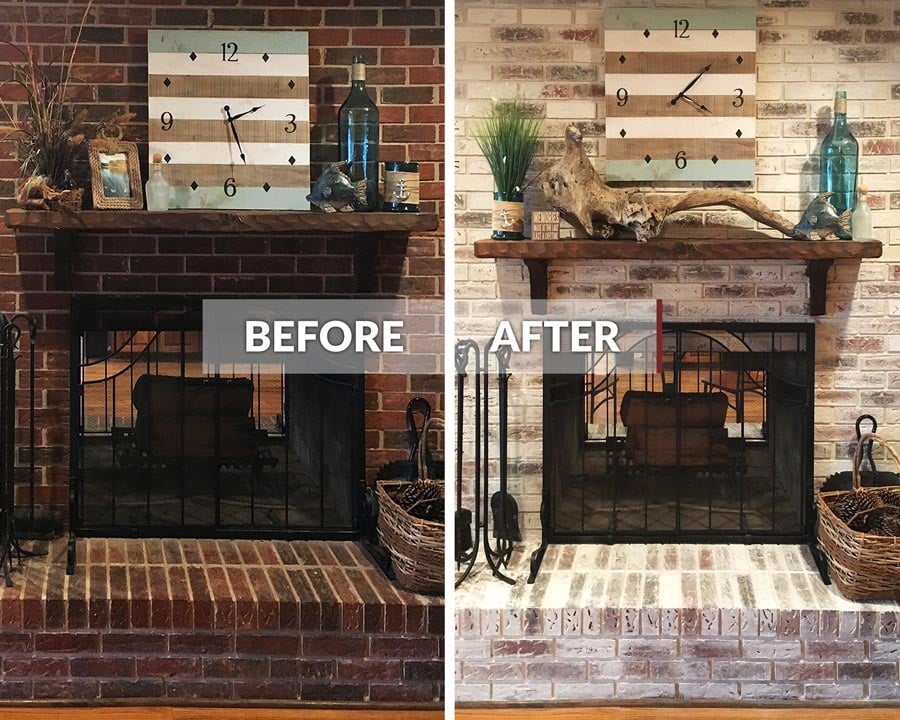
Whitewash brick fireplace, before and after
Preparing to Whitewash the Fireplace:
First, make sure the brick is clean. On an old fireplace there may be some soot that needs to be scrubbed off. Limewash covers a lot of sins, so you don’t need to heavily prep the surface; in fact, imperfections give the Limewash a more natural look.
A whitewash brick fireplace makes an amazing before and after project and you don't need to take a course in whitewashing technique to tackle this DIY.
Here's what you'll need:
-
Enough Romabio Limewash for your project
-
A large Masonry Brush (do not use a paint brush or roller)
-
A spray bottle of water
-
Clean rags or a sponge for distressing
-
An empty 5-gallon bucket for mixing
-
A measuring cup for adding water
-
A power drill with a painter’s paddle for mixing
-
A damp towel and paper towels to clean up drips
-
Drop cloth and painter's tape to protect floors and walls
-
A scrub brush for extra surface distressing
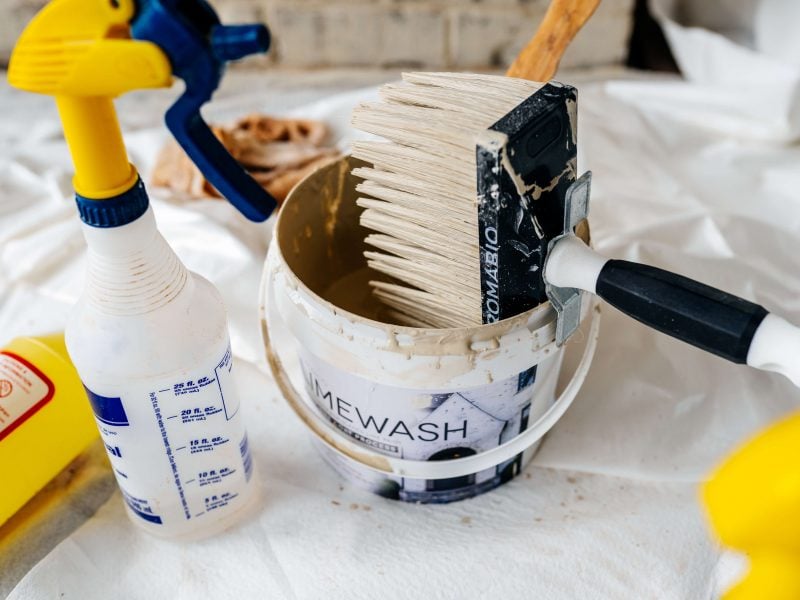
How to Dilute and Mix Limewash:
Gloves are important when working with Limewash. Even though the product is non-toxic, lime is a bit caustic so it’s best not to leave it on your skin for very long.
You only need to apply one coat of Limewash, so whitewashing a fireplace is a fairly quick project. When you open the Limewash bucket, it looks like clay because it’s basically a putty of limestone and water. Pour the Limewash into the mixing bucket and get your drill and paddle ready. You need to mix it with water to the desired consistency.
Most people start by diluting the Limewash 50% with water. For example, a 50% dilution would be 2 liters of Limewash and 1 Liter of water. This provides a thicker product for a more opaque look. For a much thinner whitewash you would dilute it 100% – equal parts Limewash and water.
We recommend starting at 50%, testing a small area and then adding more water if you’d like. Limewash must be mixed very thoroughly, so a power drill and mixing paddle are a big help. Stir together the Limewash and water, and keep on mixing until it’s smooth and looks like paint.
Now you can follow these simple steps to whitewash your fireplace with lime:
-
Start by masking off adjoining walls and protecting the floors.
-
Spray the surface with water to let Classico Limewash absorb without drying too quickly. The wall should be wet, but not dripping.
-
Apply the Limewash with the Masonry Brush all over the fireplace so the brick is no longer visible.
-
As the product begins to dry it may look semi-transparent and darker than expected – don’t worry, it dries a lighter color!
-
Wait 15-20 minutes for the Limewash to partially dry before distressing it.
-
The best time to distress the surface is in the first hour after applying the Limewash, so if you have a very large fireplace you may want to work in small sections.
-
Distress the Limewash by spraying a brick or small area with water and wiping the product off. Take off more to display the color and texture of the brick underneath, or less to create an allover whitewash brick look – it’s up to you!
-
Limewash can be further distressed or even washed off for a few days after it’s applied, so don’t stress over working quickly. You can always add another smear here and there, or remove more with a spray bottle and quick scrub.
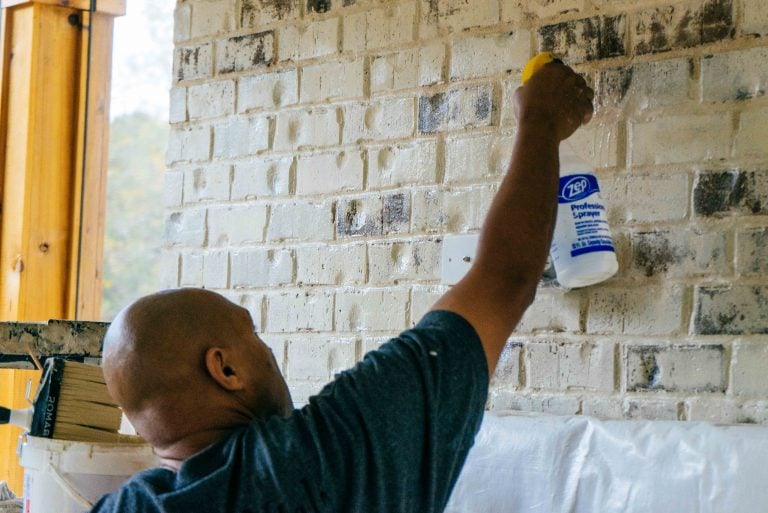
Clean up is easy. Just wash your brush and equipment with soap and water. Drips or splatters are easy to wipe off with a wet rag. Once Limewash is fully dry it is more stubborn to remove, but scrubbing with a little vinegar does the trick.
Romabio Classico Limewash | Romabio Large Masonry Brush |
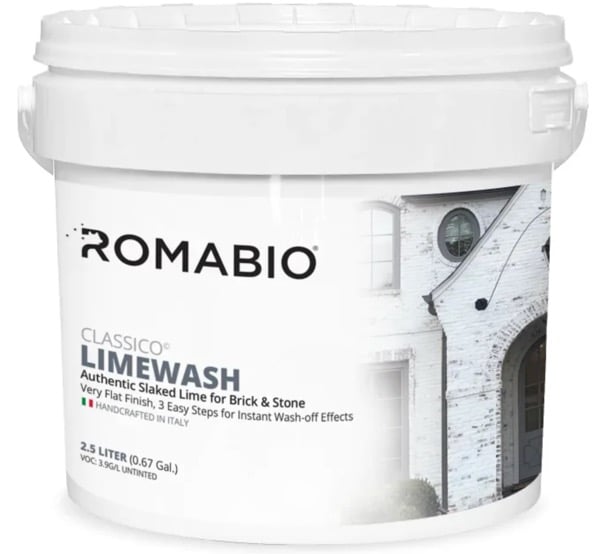 | 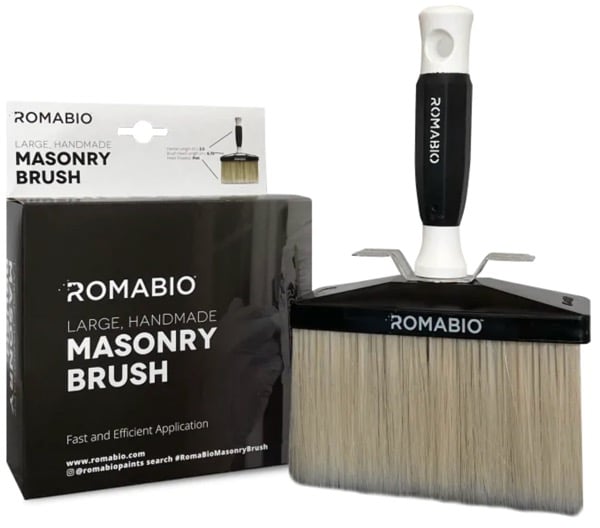 |
As low as $35.99 | $43.99 |
|
Get Your Fireplace Makeover Project Started Today!
Are you ready to whitewash your brick fireplace for a modern farmhouse look? You can buy Classico Limewash in 7 pre-tinted colors right here at Rings End. Watch the Romabio How-to fireplace video to learn even more about whitewashing your brick fireplace with lime. Be sure to share your Limewash projects with us – we can’t wait to see what you do!



